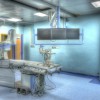A new list of harmonised standards has been published in the OJEU:
- Published : Sep 11, 2015 – OJ C 300
- Low Voltage Directive, (Directive 2006/95/EC)
- OJEU
There are 42 new, or updated, standards on this list
Welcome to gainspeed Ltd,
CE Marking Specialists
A South Wales based Product Certification and training company, specialising in supporting small to medium enterprises in meeting their CE Marking obligations
Specialists in EMC and Low Voltage
(Safety) Directives
We specialise in European and Worldwide approvals.
Flexible, Professional, and Affordable Service
We are a small organisation employing only
highly experienced associates.
New Standards

A new list of harmonised standards has been published in the OJEU:
There are 42 new, or updated, standards on this list

ISO/FDIS 13485 Medical devices — Quality management systems — Requirements for regulatory purposes Final draft of ISO 13485:2015 has been circulated and is available from BSI:
ISO 13485:2015 is due to be published early 2016.
The new ISO 13485 is applicable across the whole supply chain and seeks to address the entire life cycle of a medical device.
Some of the key changes include:
* Harmonization of regulatory requirements
* Inclusion of risk management throughout the QMS
* Additional clarity with regard to validation, verification, and design activities
* Strengthening of supplier control processes
* Increased focus regarding feedback mechanisms
* Software for QMS, manufacturing and the medical device
Additional information available from BSI:
* Download the BSI white paper on ISO 13485 – The proposed changes and what they mean for you
* Learn more about the ISO 13485 revision

This means EVERY AC operated product under the scope of EN 61000-3-3:2008 must be re-assessed, test report modified if necessary or technical justification prepared for the Technical File if no retest is done and a new EU DoC updated to reflect this change!
Most older test equipment used to measure flicker would not have been rated with EN61000-4-15:2011 (new method called in EN 61000-3-3:2013) as such it may be necessary to retest to the new standard or make a technical justification.
Its recommended that you check with the test house that originally tested your equipment, it may also say in your original test report.
If required we can now retest to the latest standard at our facility for you.


A common example of this is the home power-line communication adapters commonly used to transfer broadband from one adapter plug to another anywhere in your home. It doesn’t suffer the problems associated with signal loss from walls and obstructions like WIFI. This makes it a great way to get internet from a source connection downstairs to an office upstairs, which normally would be to far away for WIFI signals to reach.
Its also popular in offices, apartments and hotels with some networks crossing across the threshold of properties via distribution networks and premises wiring. Typically transformers prevent propagating the signal, which requires multiple technologies to form very large networks.
Various data rates and frequencies are used in different situations.
In-home Power line communication apparatus (PLC) use the mains-electricity wiring in the home for communication by injecting differential-mode (DM) signals. However these signals have the potential to cause interference to the operation of radio or telecommunication apparatus.
To control this situation both radiated-emissions and conducted-emissions tests are now specified, and both are necessary as they control different things. EN 50561-3 applies to equipment that uses frequencies including those above 30 MHz in order to communicate. Procedures are given for the measurement of signals generated by the equipment and limits are specified within the frequency range 9 kHz to 400 GHz. No measurement is required at frequencies where no limits are specified.
The radiated emission requirements in this standard are not intended to be applicable to the intentional transmissions from a radio-transmitter as defined by the ITU, nor to any spurious emissions related to these intentional transmissions.
latest date by which this document has to be implemented at national level by publication of an identical national standard or by endorsement
(dop) 2016-11-23
latest date by which the national standards conflicting with this document have to be withdrawn
(dow) 2018-11-23
For more information contact us

The European Commission has recently released an Application of Directives. The purpose of this document is to provide guidance on the date of applicability and their transitional period (if any) for the new Directives of the electrical sector.
Products within OLD LVD/EMCD that continue to be within the NEW LVD/EMCD
| Products placed on the market |
Applicable Directive(s) |
| before 20 April 2016 | old LVD/EMCD |
| after 20 April 2016 | new LVD/EMCD |
Products within R&TTED that continue to be within the RED
| Products placed on the market |
Applicable Directive(s) |
| before 13 June 2016 | R&TTED |
| between 13 June 2016 and 12 June 2017 | R&TTED or RED |
| after 12 June 2017 | RED |
Products within OLD/NEW LVD/EMCD that will be within the RED
| Products placed on the market |
Applicable Directive(s) |
| before 20 April 2016 | old LVD/EMCD |
| between 20 April 2016 and 12 June 2016 | new LVD/EMCD |
| between 13 June 2016 and 12 June 2017 | RED or new LVD/EMCD |
| after 12 June 2017 | RED |
Products within R&TTED that will not be within the RED
| Products placed on the market |
Applicable Directive(s) |
| before 13 June 2016 | R&TTED |
| after 12 June 2016 | new LVD (or GPSD)(1)/EMCD |
(1)If the LVD is not applicable (eg if the supply voltage is too low) the General Product Safety Directive could be applicable provided that the equipment is a consumer product.

